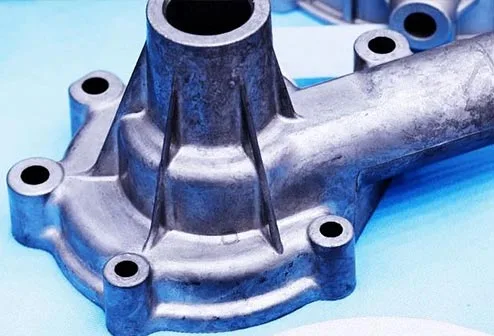Metal rollers play an important role across various industries. To improve product appearance, performance and reduce costs, many manufacturers choose to treat metal rollers with a surface chrome plating process. The metal roller surface chrome plating process is a procedure to form a chrome coating on the metal surface, aiming to provide better wear resistance, corrosion resistance and appearance. This article will take a deep dive into various aspects of the metal roller surface chrome plating process, including steps, materials and considerations, to help you better understand how to optimize your metal products.
The metal roller surface chrome plating process is a complex procedure involving multiple steps and materials. Here is a detailed overview of the metal roller surface chrome plating process:
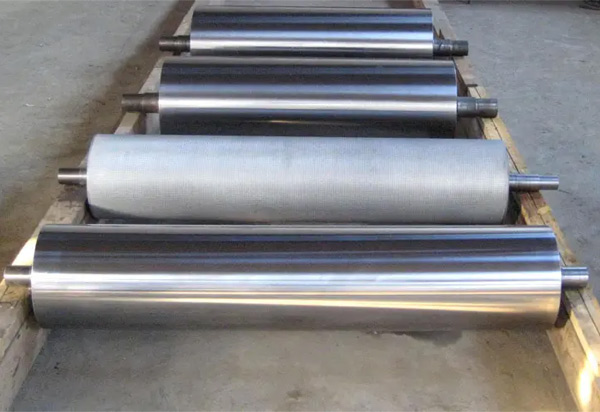
Some preparation work needs to be done before starting the metal roller surface chrome plating. This includes:
• Non-plating surface protection: Many parts have areas that cannot be plated. These areas need to be identified clearly and protected from plating before the process. For example, non-plating holes need to be plugged, and non-plating surfaces need protective coatings.
• Cleaning the metal roller: Ensure the metal roller surface is clean without dust, grease or other contaminants. Use proper cleaning agents to clean it and make sure the metal roller is completely dry.
• Removing old coatings: If there are old coatings or chrome layers on the metal roller, they need to be removed, either chemically or mechanically.
After the preparation work is done, the chrome plating process for the metal roller can begin. Below are the main steps:
1. Corrosion protection treatment: The metal roller needs corrosion protection treatment before chrome plating. This can be done by forming a corrosion inhibitive layer or coating on the metal surface.
2. Pre-treatment before chrome plating: Some pre-treatment steps need to be done before chrome plating, including cleaning the metal surface, removing oxides and other contaminants, acid pickling or electrolytic treatment.
3. Chrome plating process: This is the core step for surface chrome plating of the metal roller. It involves immersing the metal roller in an electrolyte solution containing chromium, and chrome is deposited on the metal surface by electric current.
4. Controlling the chrome layer: During the plating process, the thickness and uniformity of the chrome layer need to be controlled, by adjusting current density, plating duration and electrolyte composition.
5. Post-treatment: After chrome plating, post-treatment steps are required to ensure the quality and stability of the chrome layer. These include cleaning, removing residual liquids and surface treatment.
Specific materials and equipment are required for the metal roller surface chrome plating process. Below are some common materials and equipment:
• Chrome plating solution: The electrolyte solution containing chromium ions and additives for the plating process.
• Corrosion inhibitors: Chemical substances used for corrosion protection treatment of the metal roller before chrome plating.
• Cleaning agents: Chemical substances or solvents used to clean the metal roller surface.
• Plating tanks: Containers housing the chrome plating solution and metal roller.
• Power supply: Equipment providing current to facilitate the chrome plating process.
Some considerations need to be paid attention to during metal roller surface chrome plating:
• Safety measures: Chrome plating solutions and other chemicals can be hazardous to human health and the environment. Necessary safety precautions must be taken when handling them, including wearing protective gloves, goggles and respirators.
• Controlling chrome layer thickness: The thickness of the chrome layer is critical for the performance and appearance of the metal roller. It must be strictly controlled to meet specifications.
• Quality inspection: Quality inspection must be conducted after completion of surface chrome plating, including checking chrome layer uniformity, adhesion and surface quality.
• Quality control: Metal rollers usually go through heat treatment like quenching, tempering, secondary quenching and tempering to increase surface hardness before chrome plating. Surface hardness testing is also an important measure before chrome plating.
The metal roller surface chrome plating process has many advantages that make it the top choice for many manufacturers. Here are some benefits of the metal roller surface chrome plating process:
• Improved wear resistance: The chrome coating deposited through surface chrome plating provides excellent wear resistance, enabling longer running times for metal rollers under high friction and load conditions.
• Enhanced corrosion resistance: The chrome layer on metal rollers has good corrosion resistance to withstand corrosion by many corrosive media, allowing their use in wet, corrosive environments and prolonging service life.
• Cost reduction through re-plating: If the chrome layer on the roller surface gets damaged, re-plating and re-use is possible, reducing costs through repeated use.
• Appearance improvement: Surface chrome plating improves the aesthetics of metal rollers. The chrome layer imparts a glossy metallic appearance, making them more visually attractive.
• Increased cleanability: Metal rollers become smoother and less prone to adhesion of dust, grease after chrome plating, making cleaning and maintenance easier.
A: Use mild cleaning agents and soft cloths for cleaning metal rollers after chrome plating. Avoid abrasives or corrosive cleaners to prevent damage to the chrome layer.
A: We can apply protective films on the chrome plated surfaces according to the roller shapes, and pack the entire roller with protective films or wooden cases to ensure safe transportation after chrome plating.
A: Chrome plating forms a chrome layer on the metal roller surface, thus increasing the dimensions. The chrome layer thickness and subsequent surface finishing allowance should be considered when designing metal rollers to ensure dimensional requirements are met.
A: The cost of chrome plating depends on the size, shape and thickness requirements of the chrome layer for the specific metal roller. Larger sizes and thicker chrome layers usually increase costs.
A: Chrome plating increases the hardness of metal rollers. Hard chrome plating in particular can improve wear and corrosion resistance.
A: Metal rollers chrome plated are relatively easy to maintain. Periodic cleaning and lubrication helps keep them in good working condition and appearance.
A: Chrome plating is suitable for many common metal roller materials like steel, iron and aluminum. However, some special alloys may not be suitable for chrome plating.
The metal roller surface chrome plating process is an effective method to enhance the appearance and performance of metal products. By understanding the steps, materials and benefits of metal roller surface chrome plating, you can optimize your metal products for improved wear resistance, corrosion resistance, hardness and aesthetics. Do not hesitate to contact us, and let us help solve your problems!
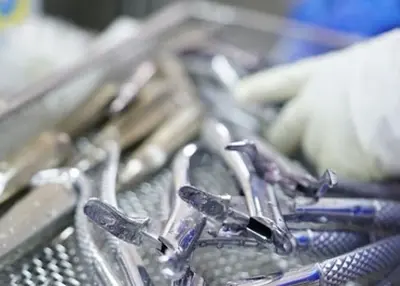 Deburring Guide: Everything You Need to Know about DeburringNovember 2, 2023This deburring guide helps you get the best understanding of the deburring process. Learn more to eliminate the part burrs.view
Deburring Guide: Everything You Need to Know about DeburringNovember 2, 2023This deburring guide helps you get the best understanding of the deburring process. Learn more to eliminate the part burrs.view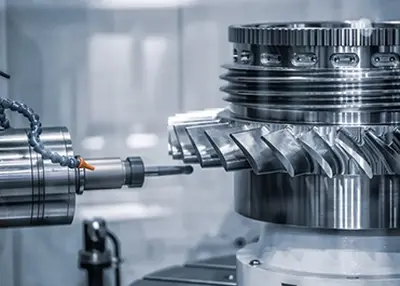 Metal Milling Techniques and ApplicationsNovember 3, 2023Are you fascinated by the art of shaping metal into precision components or intricate designs? In this comprehensive guide, I'll walk you through the world of metal milling, from the fundamental concepts to advanced applications.view
Metal Milling Techniques and ApplicationsNovember 3, 2023Are you fascinated by the art of shaping metal into precision components or intricate designs? In this comprehensive guide, I'll walk you through the world of metal milling, from the fundamental concepts to advanced applications.view Machining Inspection ProcessOctober 19, 2023A good precision machine shop must have a first-class inspection process and inspection equipment. Here is a brief introduction to Richconn's inspection standards.view
Machining Inspection ProcessOctober 19, 2023A good precision machine shop must have a first-class inspection process and inspection equipment. Here is a brief introduction to Richconn's inspection standards.view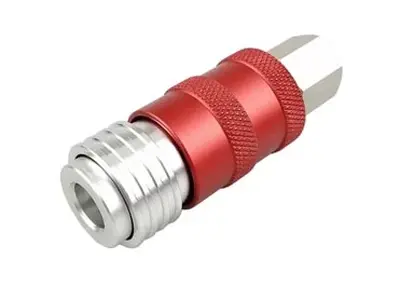 What Is Anodizing: Exploring the Anodizing Process and TypesAugust 31, 2023Anodizing goes beyond surface enhancement; it represents an extraordinary electrochemical transformation that endows a diverse range of metals with exceptional characteristics. If you've ever wond...view
What Is Anodizing: Exploring the Anodizing Process and TypesAugust 31, 2023Anodizing goes beyond surface enhancement; it represents an extraordinary electrochemical transformation that endows a diverse range of metals with exceptional characteristics. If you've ever wond...view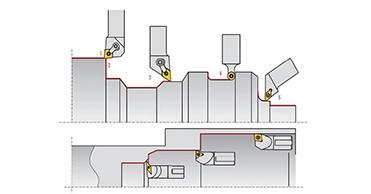 American Scientific Research Has Found A Fast And Effective Processing Method Of Low-Temperature Titanium AlloyMay 30, 2022Titanium is widely used in the aerospace industry because of its high strength and low density. However, compared with steel, aluminum, and other metals, its hot processing cost is high and it is at a...view
American Scientific Research Has Found A Fast And Effective Processing Method Of Low-Temperature Titanium AlloyMay 30, 2022Titanium is widely used in the aerospace industry because of its high strength and low density. However, compared with steel, aluminum, and other metals, its hot processing cost is high and it is at a...view Common Inspection Tools and Methods for CNC Parts: Ensuring Quality and PrecisionJune 21, 2024Learn about common inspection tools and methods in CNC machining, such as calipers, micrometers, gauges, projectors, and CMM. Discover how to use these tools accurately for quality control.view
Common Inspection Tools and Methods for CNC Parts: Ensuring Quality and PrecisionJune 21, 2024Learn about common inspection tools and methods in CNC machining, such as calipers, micrometers, gauges, projectors, and CMM. Discover how to use these tools accurately for quality control.view
 EN
EN
 ru
ru 

